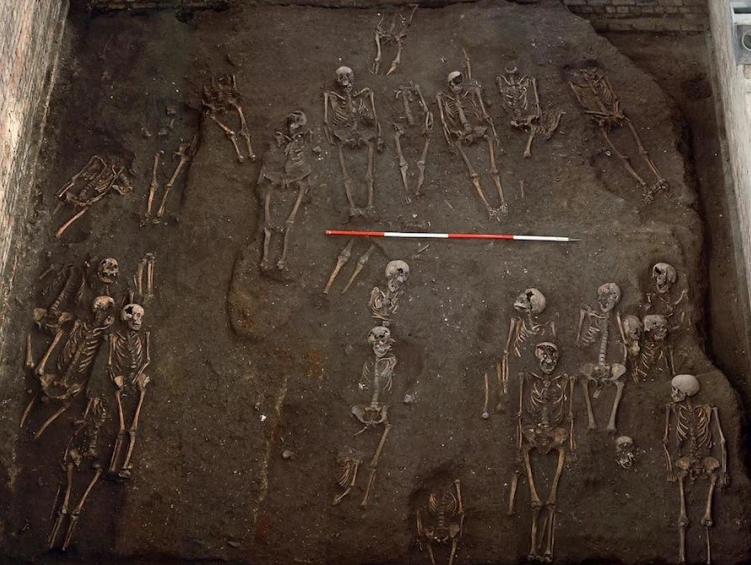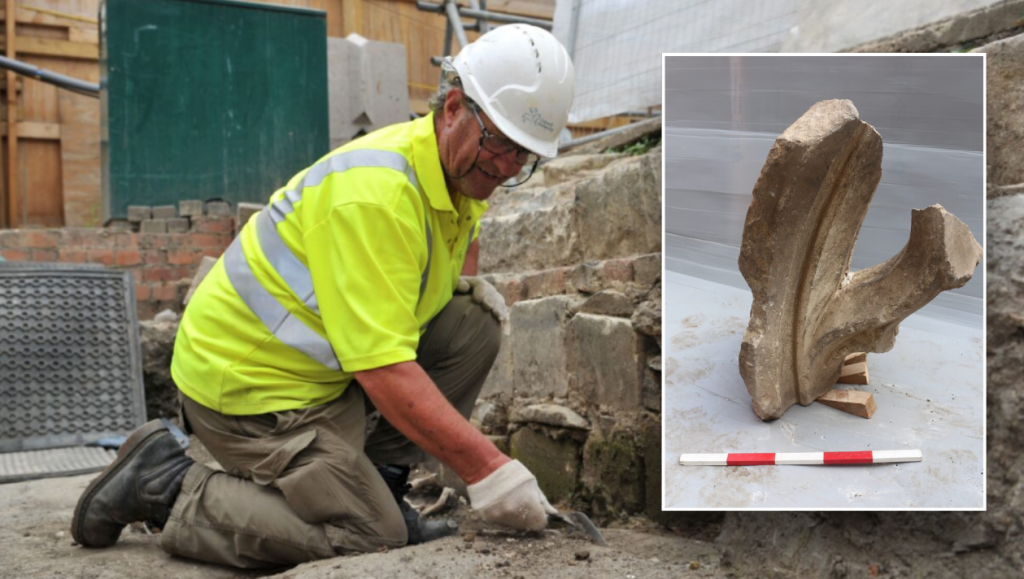Archaeological excavations beneath the former Debenhams department store in Gloucester, now being transformed into the University of Gloucestershire’s new City Campus, have unearthed over 300 human skeletons, alongside Roman and medieval artifacts. These findings provide a remarkable insight into the city’s extensive historical timeline, spanning nearly two millennia.
Unveiling Gloucester’s Hidden Past
The redevelopment of the Debenhams building into a modern educational facility prompted a comprehensive archaeological assessment by Cotswold Archaeology. This evaluation revealed a wealth of historical treasures, including Roman-era structures and a significant number of human remains. The discovery underscores Gloucester’s rich historical tapestry, dating back to its origins as the Roman settlement of Colonia Glevum.

Discoveries Beneath the Surface
Among the most significant findings are the remains of a Roman townhouse, complete with cobbled streets and associated artifacts such as pottery and roof tiles. These elements suggest a well-established Roman presence in the area. Additionally, the excavation uncovered the foundations of St Aldate’s Church, a medieval structure that was later demolished in the mid-17th century. The church’s remnants, including burial vaults and a crypt, offer a glimpse into the religious and communal practices of the time.
A Multitude of Human Remains
The site has yielded 317 skeletons and 83 brick burial vaults, spanning from the medieval period to the 19th century. These remains provide a unique opportunity to study the health, diet, and lifestyles of Gloucester’s past inhabitants. For instance, analyses have revealed the impact of dietary changes, such as increased sugar consumption in the 16th century, on dental health.
Integrating History with Modern Development
Despite the unexpected discoveries, the University of Gloucestershire remains committed to its City Campus project. The institution plans to incorporate the archaeological findings into the campus design, creating educational displays for students and visitors. This approach not only preserves the site’s historical significance but also enriches the university’s educational environment.

Conclusion
The uncovering of over 300 skeletons and Roman artifacts beneath the future City Campus site highlights Gloucester’s deep historical roots. These findings offer invaluable insights into the city’s evolution from a Roman settlement to a modern urban center. By integrating these discoveries into the new campus, the University of Gloucestershire honors the past while fostering a dynamic educational future.
The ongoing archaeological work continues to uncover layers of Gloucester’s complex history, captivating historians, archaeologists, and the wider public alike. These findings do more than enrich academic understanding—they connect modern residents and students with the lives of those who walked the same streets centuries ago. Through meticulous excavation and analysis, researchers can piece together information about ancient burial practices, societal structures, and even the evolution of the urban environment in Gloucester.
Moreover, the project has sparked local and national interest, highlighting the importance of integrating heritage conservation within modern urban development. Community engagement has also played a vital role, with public tours and media coverage helping to raise awareness of the site’s significance. As construction progresses, the university aims to preserve key elements of the site, ensuring that this extraordinary glimpse into the past will remain accessible to future generations. This intersection of education, history, and modern innovation creates a uniquely meaningful academic space.

















